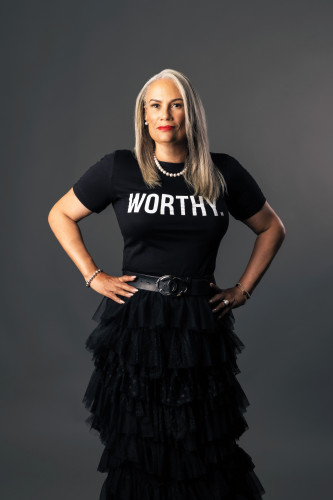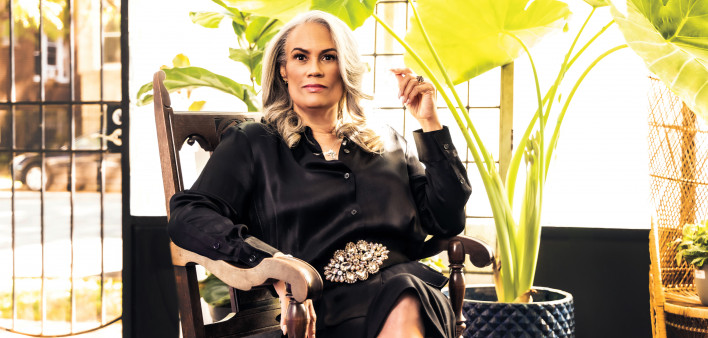The journey of writing and publishing Unprotected: A Memoir first began 14 years ago with a book deal at an A-list publishing house. The deal went to hell in a handbasket the same week I met with the publishers, although I wouldn’t know it for another six months.

“Unprotected” by Rae Lewis-ThortonCourtesy of Rae Lewis-Thornton
In 2010, two years after I lost the book deal, I was determined to rewrite this memoir. I made a big announcement on social media. I even got 13 presales. After three chapters, I realized the problem wasn’t that I couldn’t write, as the editor at the publisher’s had said. (I was working on my PhD at the time of the book deal. Of course, I could write.) The problem was the emotional barrier I couldn’t break to write the story that needed to be told. Then, around November of 2018 after reading Cookie Johnson’s memoir, Believing in Magic, I started writing again. Her authenticity touched me profoundly, and I knew in my gut that it was time.
I went on a writing retreat to Bali, Indonesia, in January of 2019. I literally pulled the old manuscript apart paragraph by paragraph so I could envision a new direction, and I didn’t stop until this memoir was done. When I started, I had no idea it would take me this long, but then I hadn’t realized that I would have to relive the traumatic events of my life to get my story out of me onto paper—that is, not until I was in knee-deep.
My book title hasn’t changed from what I proposed to the publishing house in 2008, Unprotected: A Memoir. What has changed is the focus of the story to make it mine. The publishers wanted a book about a little Black girl who had a horrible childhood and fucked around in the name of looking for love and got HIV but in the end made good on her life. However, the story God wanted me to write is about how unprotected I was as a child and how that shaped the trajectory of my life. Plainly stated, this book is about the cycle of trauma and how it impacted my life, not just my sex life but all areas of my life: my education, my self-esteem, how I viewed the world and everyone who crossed my path. I recognize today what God already knew, that I could not have written this book 14 years ago. I was not emotionally or mentally ready, and that’s why the universe did not cooperate the first time around.
My story begins on the South Side of Chicago at the age of six with the death of my grandfather, after which darkness descends over my life like the sky before a storm. I have only one memory of being a happy little girl: sitting on my paternal grandfather’s knee in the auto shop garage next door to our home on Swann Street sipping an orange Fanta soda. His death changed my world as I knew it and left me unprotected. In the care of his third wife, the woman I call Mama, trauma becomes a way of life and my new normal.
I introduce Mama and our complicated relationship in the prologue. In chapters 1 through 12 you will meet Little Rae and see how she creates a parallel world of resilience while living in abuse. I should warn you, there will be many triggers for those who have survived trauma. It is the darkest part of my story, with both sexual and physical violence, and it was the most difficult for me to write.
You will have a front-row seat to sexual grooming, manipulation, and rape. You will see how Little Rae tries to make sense of what is happening to her with no name for sex, only an understanding that this is being fast. The word fast as used in this book is a pejorative term that has been used among generations of Black women as a way to contain Black girls. You will see Little Rae trying to make sense of Mama’s frequent use of fast while navigating the sexual violence all at the same time. You will also meet the first angels God places in Little Rae’s path to serve as a buffer, a reprieve from the trauma. You will meet Mama’s boyfriend, his children, and the family we created. Little Rae is remarkable in that she never gives up. Not after beatings, rapes, or tongue lashings.
In chapters 13 through 24, my preteen and teenage years, you will journey with me as I mature and navigate dating and friendships. At the beginning of the 7th grade, we move from Englewood to Evanston, a suburb on Chicago’s North Shore. My exposure to a different cultural and educational environment became a game changer in my life. I could see fundamental differences from the world in which I had lived in Englewood, and that inspired me to reimagine a life different from the one I lived with Mama.
As a result, I latched onto every good thing: my friends and their mothers, my middle school teachers, Harlem Renaissance–era books, my new pastor, and church programs influenced by Black liberation theology. Again, God placed angels in my life who acted as buffers and helped me to reimagine a life full of love.
You will meet Mama’s new husband and bear witness as he makes my life a living hell. Period. It is during this time I start to believe that God has a plan for my suffering, and I appropriate my faith as one of my survival tools. This became the biggest aha moment of my life. I would hold on to it until my purpose was manifested years later. What I latched onto in those middle years saved me from total self-destruction, but it was not enough. By the age of 17 and homeless, I go through another dark period.
In chapters 24 to around 31, you will see me lost and trying to survive the best way I could. Moving into my young adult years with low self-esteem clinging to me like a monkey on my back, I go from a victim of abuse to self-abuse. You will have a front-row seat to my own missteps and dysfunction. Again, there may be triggers in this section for some of you. In fact, intermittently throughout the book are scenes that may be a trigger. As you read my story, take some breaks; have a cup of tea; be kind to yourself.
In the last chapters, you witness a turning point in my life. In college, I found my purpose in social justice work. I begin by organizing college students for Harold Washington’s mayoral campaign. From there I accept an internship at Operation PUSH, which catapults me into the national political landscape. You will meet the people that helped shape me as a young woman and develop me intellectually. Still, there are missteps, and my tumultuous relationship with Mama is never-ending.
Four years later, when I am 24 years old and had finally turned my life around, I learn that I have HIV. Unbeknownst to me then, I contracted the virus four years earlier just after my 21st birthday. These last chapters illuminate how I navigated my HIV diagnosis at the darkest period of the AIDS pandemic, when there was no treatment and no hope. Facing death, I stepped into the space where I believe God ultimately intended for me to be.

Rae Lewis-ThortonKirsten Miccoli
I leaned heavily on the research around the impact of childhood trauma to center my story. Throughout the book, I interweave the terms toxic stress, long-term trauma, and continuous cycle of trauma that are defined by Nadine Burke Harris, MD, MPH, in her book, The Deepest Well, as: “…when a child experiences strong and frequent and/or prolonged adversity such as physical or emotional abuse, neglect, caregiver substance abuse, or mental illness.”
I was introduced to this topic by watching Burke Harris’s TED Talk, How Childhood Trauma Affects Health Across a Lifetime. (Burke Harris was the first surgeon general of California and a pediatrician who has dedicated her life to understanding childhood trauma.) In those 12 short minutes, she rewired my brain. I had always understood that trauma has a psychological impact, but I was blown away to learn that a cycle of trauma during the developmental stages of a child can change the biology of their body and brain and put them at an increased risk for substance abuse, mental illness, heart disease, cancer, high blood pressure, and a host of other illnesses.
Burke Harris’s starting point was the Adverse Childhood Experiences (ACEs) study, which was conducted by the Centers for Disease Control and Prevention and Kaiser Permanente. It was published in 1998 in the American Journal of Preventive Medicine. This study looked at 10 types of adversities in three categories: neglect, abuse, and household. In so doing, it showed the relationship of childhood abuse and household dysfunction to be many of the leading causes of death and dysfunction in adults.
I rushed to the internet to find the ACEs questionnaire and took the test. An ACEs score is a person’s total number of adverse childhood experiences. I scored an 8 out of a possible 10. The higher your score, the greater your chances of health disparities as an adult. Since the original study, there have been more than 2,000 related studies that substantiate the original study.
Burke Harris and other experts argue that a cycle of childhood trauma can lead to an overactive stress response system, which they call “deregulation, a disruption of the normal cortisol pattern.” Let me explain. Cortisol is the long-term stress hormone that is designed to activate when there is a threat. It increases your blood pressure, blood sugar, inflammation, makes a person more aggressive, and conserves belly fat. This is commonly referred to as “fight, flight, or freeze.” When the threat is over, cortisol turns itself off and the body goes back to normal.
However, high doses of trauma cause the stress response to go haywire (i.e., deregulation). Basically, the stress response system has been activated so often it does not turn off even when there is no threat, or it is activated more frequently for the simplest of things. A child who experiences toxic stress caused by a cycle of trauma is likely to develop poor health and social outcomes that follow through adulthood.
Around the same time, I stumbled upon Bruce Perry, MD, PhD, a renowned clinical child psychiatrist and author of The Boy Who Was Raised as a Dog and his latest book, coauthored with Oprah Winfrey, What Happened to You? His research illuminates some of the same points made by Burke Harris and other scholars on the topic of childhood trauma but adds a rich understanding of how the brain works. His research was particularly enlightening and helped me to understand my lack of impulse control and reasoning ability, which you will read about in this book.
His starting point is a hierarchical brain chart illustrated as an upside-down triangle. The top of the triangle, the cortex, is the smartest part of the brain. It is where we learn and where our values and beliefs are created. The bottom of the triangle, the brain stem, is the regulatory part of the brain; it controls our blood pressure and heart rate, and it happens to be the least intelligent part of the brain. Once the bottom is activated, the cortex shuts down. This was another aha moment for me. You will see me going into situations not thinking, triggered, and reactionary—often making mountains out of molehills.
Through a new lens I am closer to understanding the toll that living in trauma had on my life. It was a wonderful feeling to learn that nothing was wrong with me. My body and mind responded to the trauma as it was designed to do. It’s just that it was never turned off. I was always on high alert, anticipating a beating or dealing with the aftermath of a beating or being cursed out. My life was unpredictable, and I never knew if down meant up or up meant down. I can’t recall a period in my life as a child through my young adult years where I wasn’t on high alert. Even today, I’m easily triggered, but I understand better what is happening to me. I now have tools to help me address triggers in a positive way. I saw a meme that said, “Trauma is what happens inside of you as a result of what happened to you,” and it hit the nail on the head. With this understanding, I work hard to break the cycle of being hot-wired all the time.
It goes without saying, but I will say it anyway: I believe everyone should take the ACEs test, but only when you are ready. If you take the test, I suggest utilizing the resources available for you on my website, RaeLewisThornton.com. I am a strong advocate for trauma-informed training for social workers, teachers, doctors, nurses, police officers, and correctional officers, and it should be an absolute requirement for foster parents. I also concur with Burke Harris: Children should be given the ACEs test as an intervention tool to identify the trauma in their lives. Too often we write a child off as problematic—slow, bad, fast, hyper, won’t pay attention, talks too much—when the problem is not the child but rather the symptoms of trauma showing up in a child’s life.

Rae Lewis-ThortonKirsten Miccoli
I cannot erase the experiences that you will read about in these pages, but I don’t have to be stuck. I continue to work on myself. The hardest of all was writing this memoir. Yes, it was cathartic. My therapist and psychiatrist held my hand during the writing of this book. They forced me to take breaks. In fact, about a year into writing I had a really bad trigger and was unable to write for over a month, and then only in increments. I added therapy sessions and medications to help with anxiety while writing this book. This is another reason it has taken so long to complete. With each trigger, I had to process what happened to me rather than push it back and leave it unresolved, no matter how painful it was. In every single chapter, I shed another piece of the old me, which brought me closer to who God intended for me to be.
Like Little Rae, I forged ahead, thanks be to God. My hope and prayer are that my story will make you laugh and cry, give you many aha moments, and, ultimately, that you will take whatever you need from my life to help enrich your own. Namaste.
Click here to purchase a copy of Unprotected: A Memoir from the POZ bookstore.







Comments
Comments